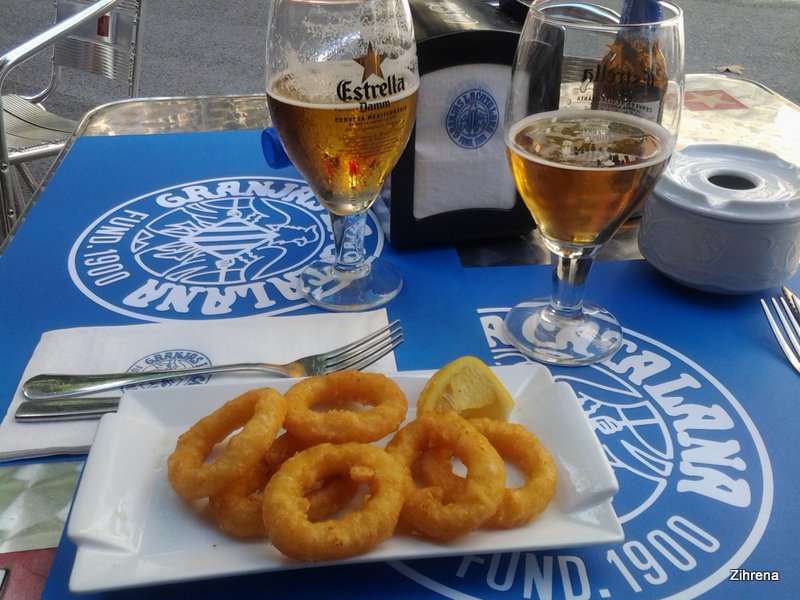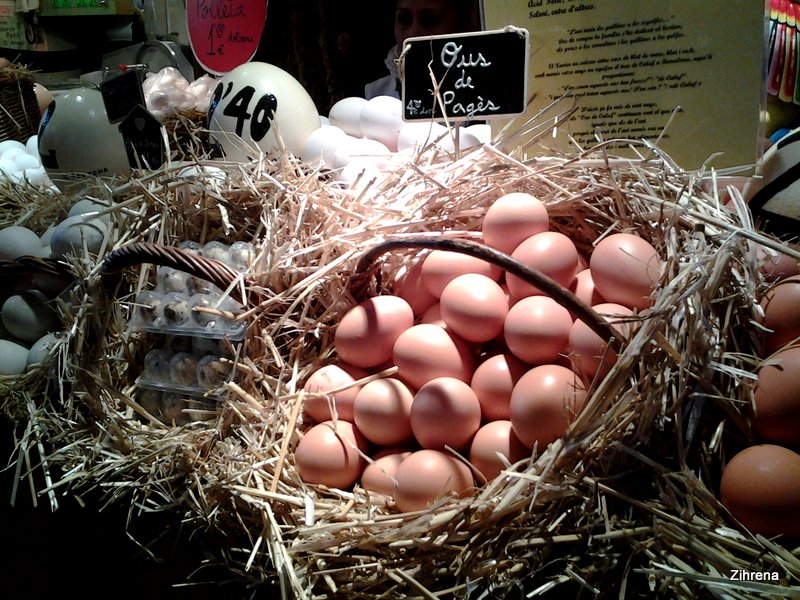Spain means paella and Spain means tapas: little snacks of marinated anchovies, tortilla española, spiced olives, tuna canapés, deep fried squid, batatas bravas (potatoes in a spicy sauce), thin slices of jamón serrano … the list goes on. Barcelona also means pa amb tomaquet: bread and tomato, which can sound boring after thinking of all those other tasty treats. It’s amazing, though, how coarse or toasted homemade bread rubbed well with fresh tomato and seasoned with a drizzle of olive oil, salt, and sometimes garlic (yes!) can make your mouth water. Even a bad piece of bread can turn out surprisingly tasty when treated that way.
To tell you the truth, being vegan in Barcelona was not an easy nut to crack. I was stymied more than once in my quest for vegan-friendly food when dining out. I did have to depend on pa amb tomaquet often. But I did feast a few times on sautéed mushrooms, steamed asparagus, and somewhat meager salads made with white iceberg lettuce, a bit of tomato, olives, and sliced onion (hold the hard boiled egg, tuna, mayonnaise, and cheese, please). However, those salads were disheartening when compared to what I am used to.
Eggplant, green beans, and other cooked veggies sometimes made it onto restaurant menus as more than mere garnishes. Beans, rice, and pulses were used in very many Spanish national dishes; unfortunately, they were always well and inextricably combined with Spanish sausages, fish, seafood, rabbit, chicken, and pork in stew-like concoctions. Generally, if I wanted a hearty green salad, I bought the ingredients and put it together myself, or I simply grazed from a stock of fresh fruit I kept in our room.
One excellent vegan option in Barcelona is Escalivada, or grilled vegetables. These usually include eggplant, bell peppers of various colors, onion slices, tomato wedges, potato slices, and sometimes zucchini and asparagus spears brushed with olive oil and garlic and well grilled over coals.
I did notice that vegetable paella did appear on almost every menu, perhaps in deference to the growing vegetarian and vegan population; however, the Spaniards seem to scoff at a dish that contains no animal protein and throw those veggie paellas together without much care or effort regarding taste, as if to say, “Bah! If you want paella without meat or seafood, that’s your loss. I’m not going to help you have a good meal!”
On the other hand, in certain areas of town, Arabic food was easy to come by. Near the Sants train station, for example, was a series of Middle Eastern restaurants where I found vegetarian eggplant casseroles, hummus, baba ganoush, lentils, and spicy roasted peppers with homemade pita bread. The restaurants were Lebanese, Syrian, and Turkish, and each placed a slightly different emphasis on ingredients and cooking methods.
This is not to say that fresh ingredients themselves were hard to find in Barcelona. Oh no. The stores and especially the markets, such as La Boqueria market off La Rambla, offer an amazing variety of lovely, fresh produce. I just wonder who eats it, when, and where.
Here are some photos of tapas and snacks in Barcelona, as well as shots of some of the fresh market offerings that amazed me, given the lack of them on restaurant menus. The fresh juices and baskets of berries were to die for.
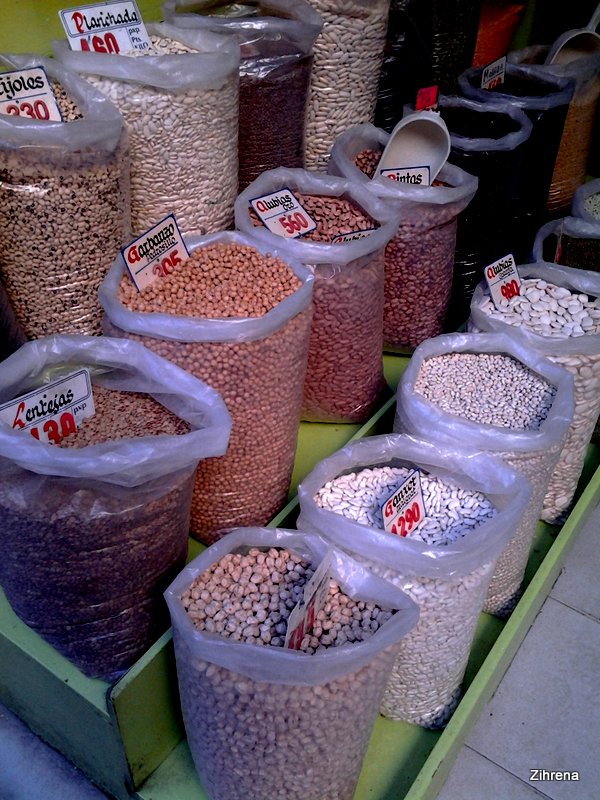
Beans at the market: Lentils, garbanzos, white beans, navy beans, red beans…
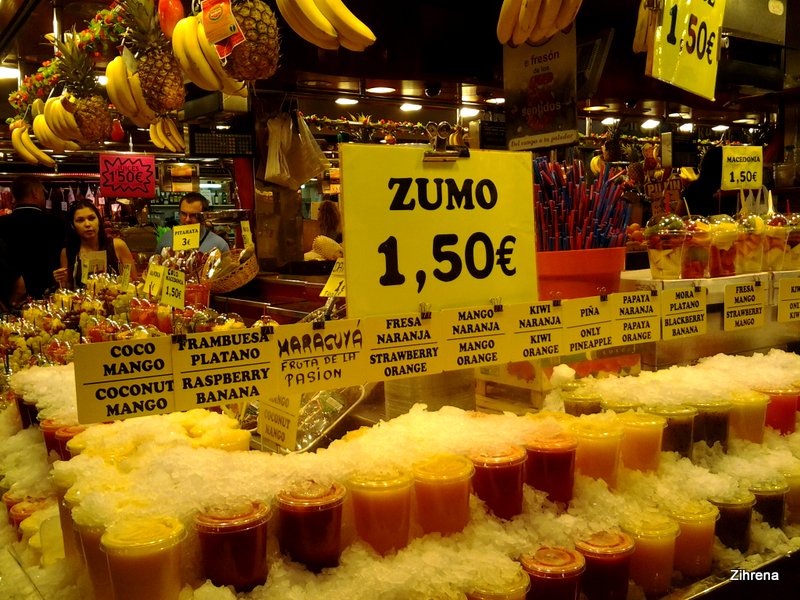
Juice stand, Barcelona: mango, banana, coconut, strawberry, orange, maracuja, papaya, pineapple, kiwi…
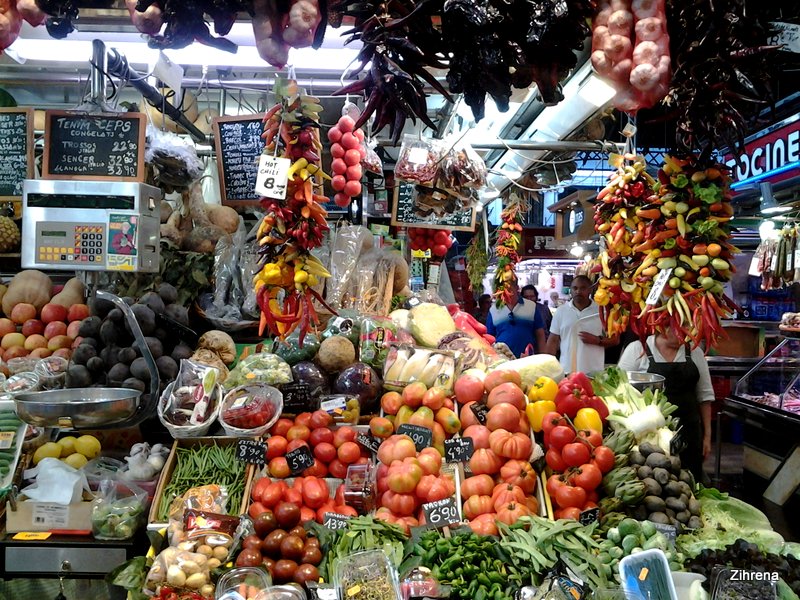
Fruits, veggies, dried peppers, mushrooms, all on display at the market off La Rambla de Catalunya, Barcelona
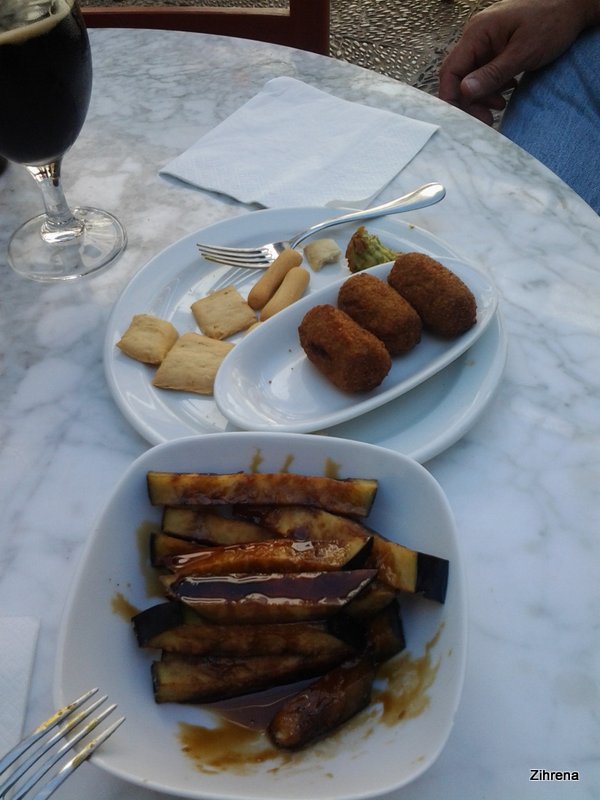
These eggplant “fries” drizzled with dark honey were AMAZING!
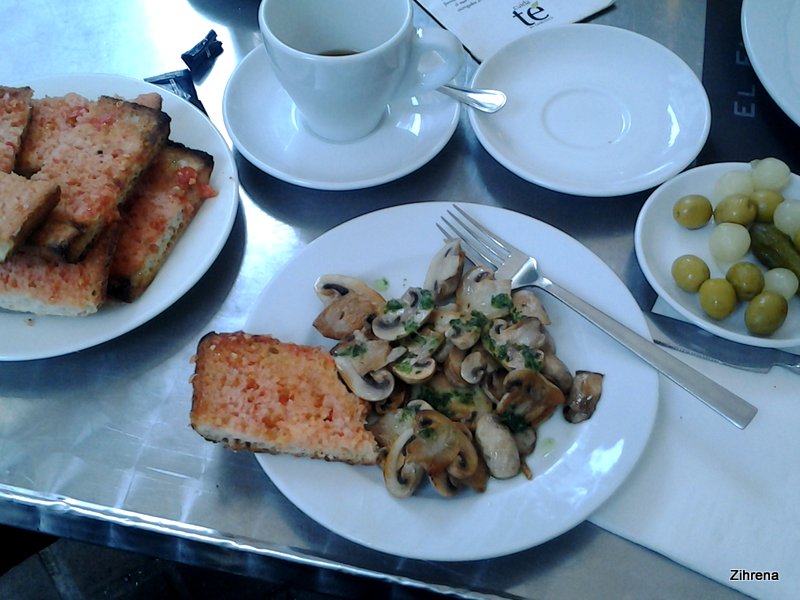
Sauteed mushrooms eaten with tomato-topped bread and a selection of olives and pickles.
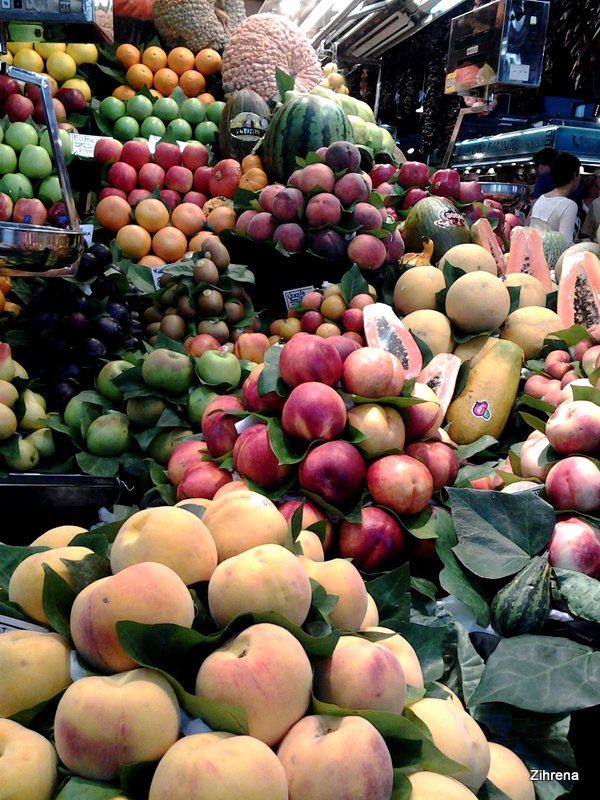
Stacks of fruit in the Barcelona market off Las Ramblas. There are a few things I’ve never seen before, but many of these products are from the tropics.
